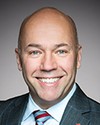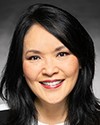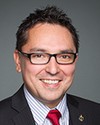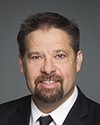Oh, very simple.
There are a number of challenges, of course—very different from the on-reserve versus off-reserve—and the federal government, regardless of what political party has been in power, has never been the friend of the off-reserve indigenous population. I think we have to start there.
There is the Supreme Court of Canada Daniels decision, which says that the federal government has a fiduciary responsibility to non-status and Métis, including the status population.
That historical evolution of that relationship has for all purposes, up until 2015—and I would suggest even to this day—left the off-reserve population in a vacuum. The devolution process of the federal government in 1996 to the province, and the province to the city, has created this vacuum where nobody wants to step forward and step up and say who's really responsible for this 80% of the population living off-reserve. That hasn't happened. Now the landscape has changed, and hopefully we'll see some progress with this new government.
What we have witnessed over the last 70 years here in Vancouver, and it's well documented, is.... You can look at the demographic patterns of where indigenous people live in Vancouver as an example. We make up 2% of Vancouver's population. The majority of us live in east Vancouver. The majority of us in east Vancouver live in what we call the Grandview—Woodlands area, and then the second community—it's like an L—is the Downtown Eastside, Canada's most impoverished urban area code.
The programs and services that have been developed over those 70 years have created, in just Downtown Eastside alone, 260 non-profits, and in the Grandview—Woodlands area, 40 other non-profits. If you go to the other communities in the nearby areas, there are very few.
What we have effectively done without questioning—because for whatever reason we don't question this stuff—is we have created a ghetto. We've ghettoized urban aboriginal people. We segregate them in the educational institutions, and we segregate them in programs and services. We say that if you want day care you have to go over to this community in the Downtown Eastside to get your service. We pull them out of their natural community, away from their natural friends, their parents, their work, and their public school.
We have a whole bunch of alienation that has been taking place unquestioned. The key concept we have to be looking at when we're dealing with indigenous populations, on- or off-reserve, is what is the framework? What is our goal? Do we really intend to close the gaps, if that's our goal? Then how do we get there?
The key concept, as we see with our brothers and sisters on reservations, is that they have a comprehensive community planning process that's funded. When it comes to the off-reserve, you have federal governments, provincial governments, municipal governments that don't want to deal with these issues. They all say it's someone else's responsibility. At the end of the day, what we see is a concentrated population in cities cross this country, which has ghettoized us, with no means, to this day, to find comprehensive indigenized solutions that go beyond an item—that go beyond suicide, beyond poverty, or homelessness, or day care, or whatever.
Thank you. I hope I answered your question. I don't know if I did.





